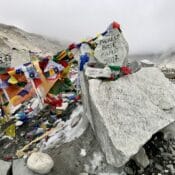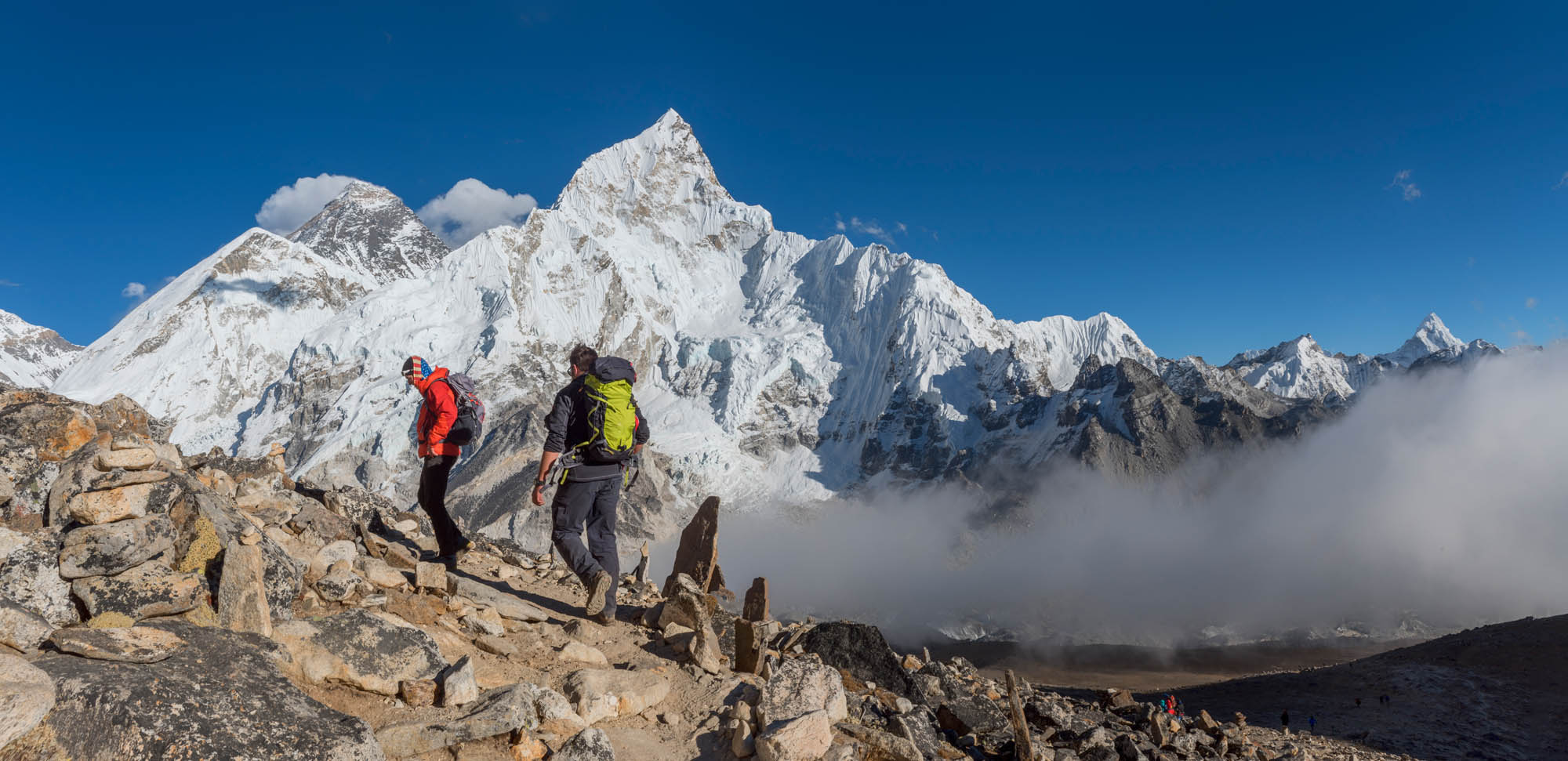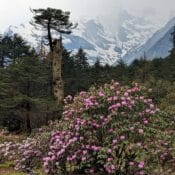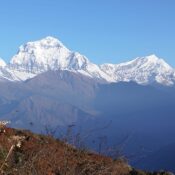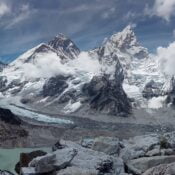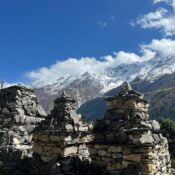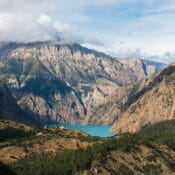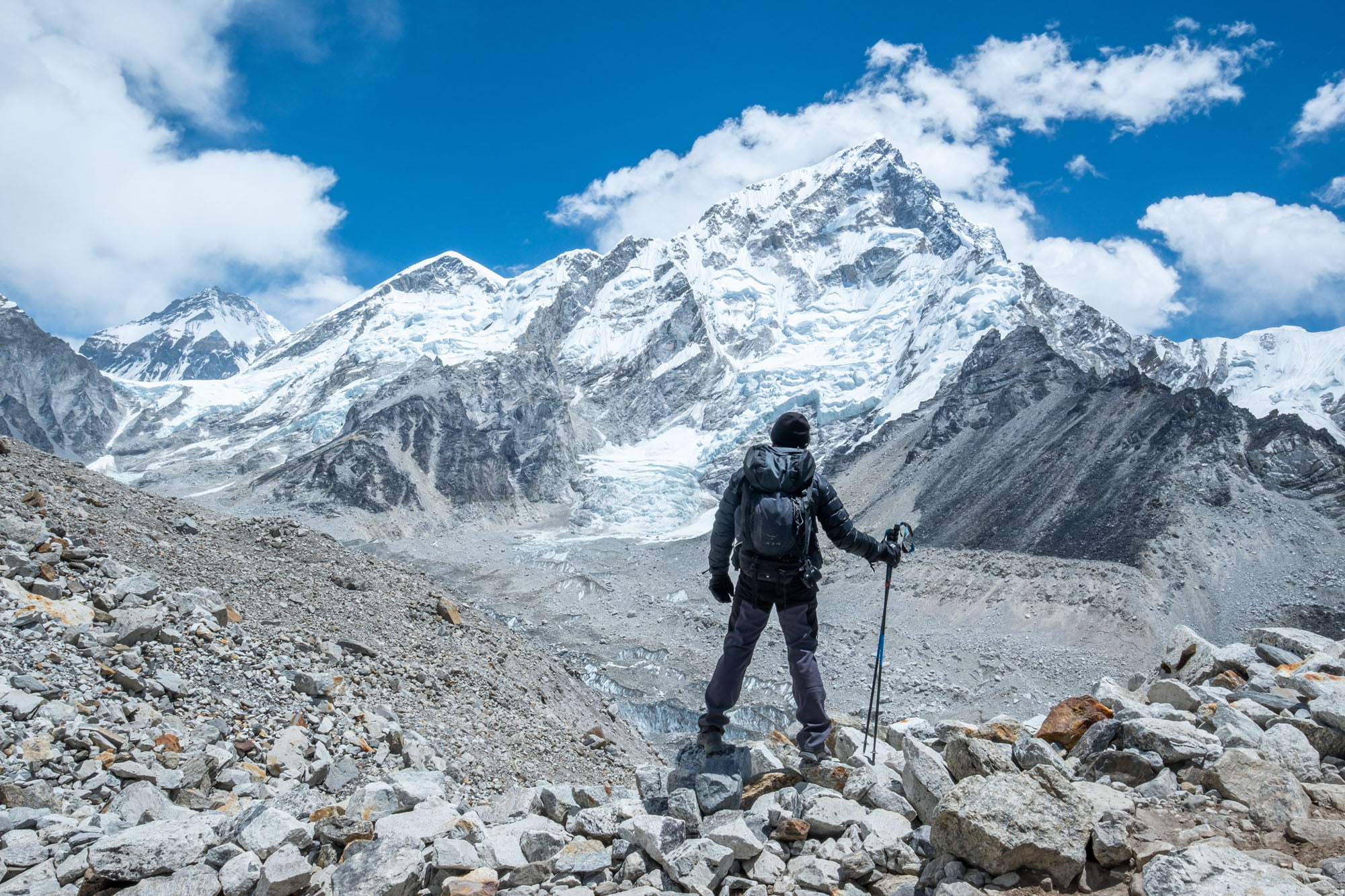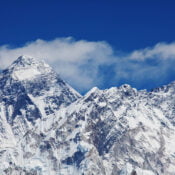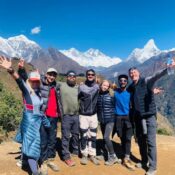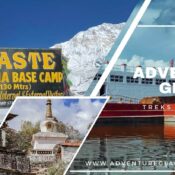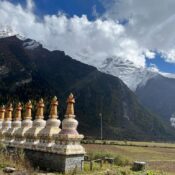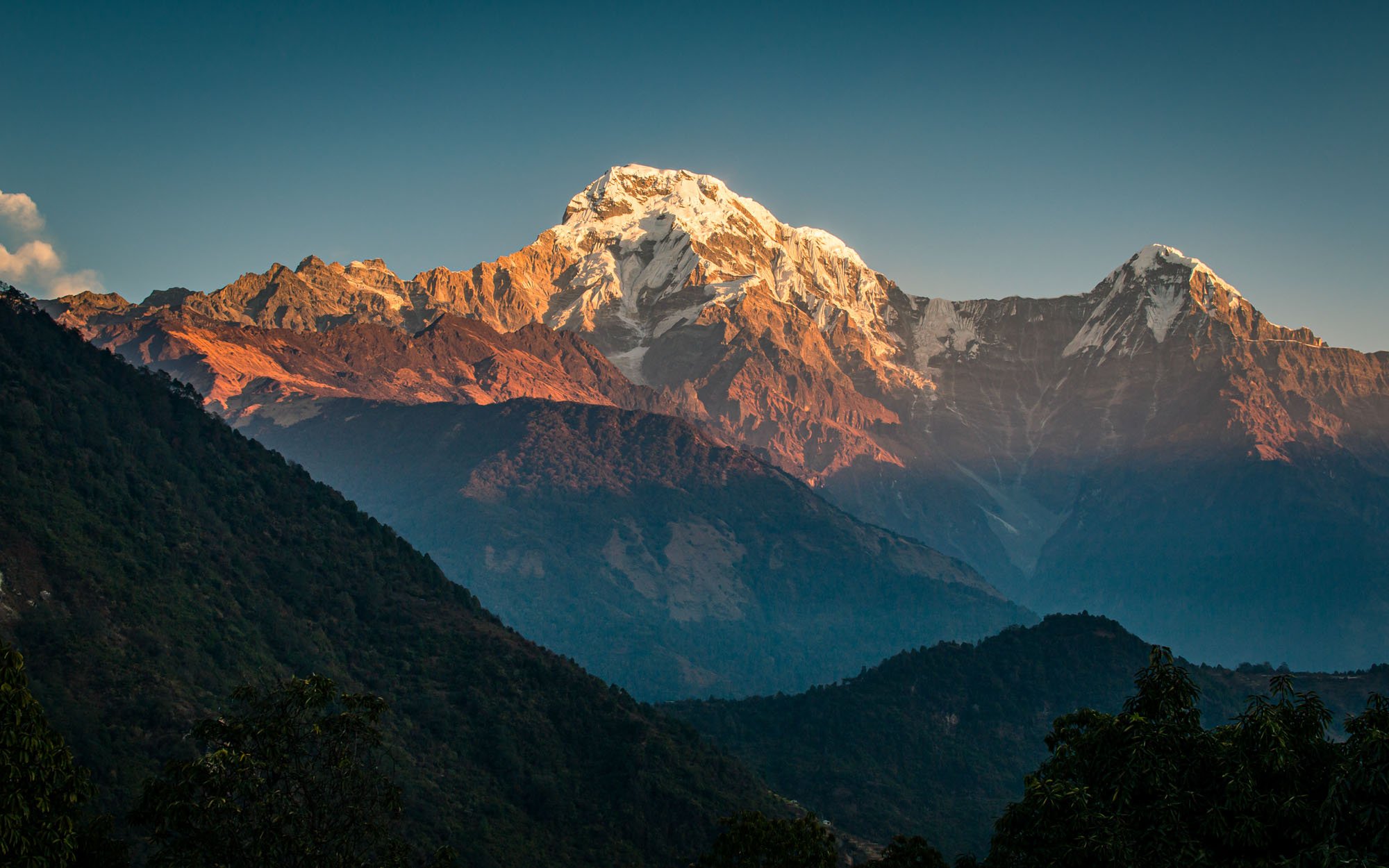Ultimate Guide to the Everest Base Camp Trek: Everything You Need to Know
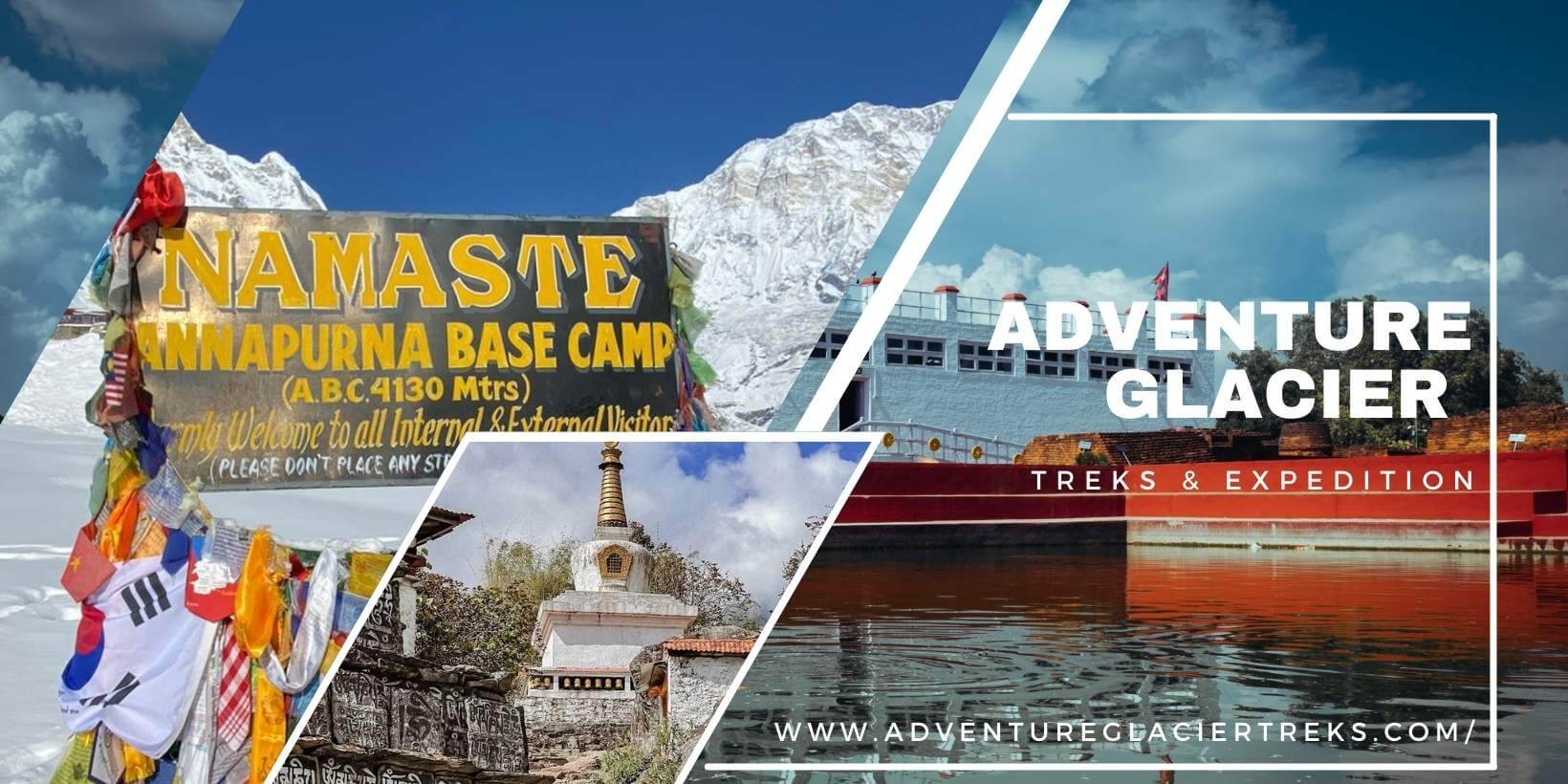
The mere mention of the Everest Base Camp Trek (EBC) in Nepal sends shivers of excitement down the spines of seasoned and aspiring adventurers worldwide. This iconic Himalayan route has etched its name in the hearts of thousands who have traversed its rugged paths, each step a testament to their resilience and love for the mountains.
For some, the EBC trek is a pilgrimage, a rite of passage marking their entry into the elite fraternity of seasoned trekkers. For others, it’s a dream come true, a chance to stand face-to-face with the crown jewel of the Himalayas, Mount Everest, the highest peak on Earth.
Why the Everest Base Camp Trek is Unforgettable
Towering at a staggering 17,598 feet (5,364 meters), Everest Base Camp itself is a sight to behold. But the journey to reach it is equally, if not more, captivating. Prepare to be awestruck by:
- Breathtaking Panoramas: Witness a kaleidoscope of landscapes, from lush green valleys adorned with prayer flags to snow-capped peaks piercing the azure sky.
- Diverse Flora and Fauna: Immerse yourself in the vibrant tapestry of nature, where rhododendrons bloom in a riot of colors and elusive musk deer dart across the trails.
- Rich Cultural Tapestry: Encounter the warmth and hospitality of the Sherpa people, whose lives are intricately woven into the fabric of the mountains.
Planning Your Everest Base Camp Adventure
Whether you're a seasoned hiker or a first-time trekker, conquering the EBC requires meticulous planning and preparation. Here’s what you need to know:
1. Best Time to Go
The shoulder seasons of spring (March to May) and autumn (September to November) offer the most favorable conditions for trekking. Clear skies, mild temperatures, and manageable crowds await you during these times.
2. Challenges to Expect
Altitude sickness, unpredictable weather, and demanding terrain are all part of the Everest Base Camp experience. Physical fitness, mental fortitude, and proper acclimatization are key to tackling these challenges successfully.
3. Essential Gear
Investing in the right gear is crucial for comfort and safety. Sturdy hiking boots, warm clothing, a reliable sleeping bag, and weatherproof gear are your essential companions on the trail.
4. Permits and Logistics
Obtaining trekking permits and arranging transportation and accommodation are essential prerequisites. This guide will walk you through the process, ensuring a smooth and hassle-free experience.
Beyond the Basics: What Makes the EBC Trek Special
This guide delves deeper, providing insights into:
- The history and cultural significance of the EBC trek.
- Tips for acclimatization and altitude sickness prevention.
- Sustainable trekking practices to minimize your environmental impact.
- Local customs and etiquette to ensure a respectful encounter with the Sherpa culture.
Where is Everest Base Camp?
While there are two base camps for Mount Everest, this guide focuses on the South Base Camp, located in the Khumbu region of Nepal. Nestled at the end of a majestic valley that splits near the Sherpa village of Dingboche, it sits at an impressive 5,364 meters (17,598 feet), offering mesmerizing views of the surrounding peaks.
This base camp stands as the starting point for many climbers attempting to summit Everest, with the daunting Khumbu Icefall looming as the first major obstacle on their path. This colossal glacier, leading up to the Western Cwm (Valley of Silence) and peaks like Lhotse and Nuptse, adds a layer of awe-inspiring challenge to the already breathtaking journey.
A Legacy Born on the Roof of the World
The story of Everest Base Camp is intertwined with the very first attempts to conquer the "roof of the world." In the early 1920s, pioneers like George Mallory dared to explore the unforgiving slopes of Mount Everest. His expeditions, particularly the 1924 attempt shrouded in mystery, paved the way for future climbers while establishing the north face as a formidable route.
It wasn’t until Edmund Hillary and Tenzing Norgay’s triumphant 1953 ascent from the south face in Nepal that the concept of a permanent base camp took root. Their vision culminated in the establishment of the first Everest Base Camp, a strategic outpost at the foot of the mountain. This innovation revolutionized future expeditions, offering a central hub for climbers to acclimatize, store supplies, and prepare for summit attempts.
From humble beginnings—tents and rudimentary shelters—Everest Base Camp has evolved into a bustling settlement. Today, it stands as a testament to human ingenuity and ambition, welcoming thousands of trekkers and climbers each year.
How Long is the Trek to EBC?
The Everest Base Camp Trek, nestled in the heart of the Himalayas, beckons adventure seekers worldwide. While some may raise concerns about overcrowding and environmental impact, the thrill of ascending towards the world's highest peak remains undeniable.
Distance and Pace
Reaching Everest Base Camp demands patience and perseverance. Prepare for a challenging high-altitude journey spanning roughly 80 miles (130 km) roundtrip, typically completed in 12-14 days. Don’t let the "rest days" fool you—even they involve walking. Expect daily sections of 8-10 miles (13-16 km), broken down into manageable chunks to ensure proper acclimatization.
Walking Times
Most trekkers comfortably manage up to 8 hours of daily walking, which may increase slightly in higher altitude sections. The physical challenge isn’t the only reason for frequent stops—prepare to be mesmerized by breathtaking panoramic views at every turn!
Acclimatization and Rest
Altitude sickness can cast a shadow over any Everest Base Camp adventure. To avoid this unpleasant surprise, prioritize acclimatization. Gradual ascent, proper hydration, and attentive listening to your body are crucial. Remember, rest days are just as important as trekking days for your well-being and enjoyment of the journey.
Is It Worth It? Highlights & Costs
The true joy lies in the expedition itself, as you ascend higher to marvel at the world from its pinnacle. The Everest Base Camp Trek provides some of the most breathtaking views of the renowned Everest, particularly from various vantage points along the route. Here are some of the trek’s standout highlights:
- Kala Patthar (Kalapathar): Translating to "Black Rock," this elevated viewpoint stands at 18,208 feet (5,550m) above Gorak Shep. Many consider it the best vantage point for a stunning view of Everest.
- Gorak Shep: Situated at the base of Kala Patthar, this small settlement is the heartland of the Sherpa people.
- Sagarmatha National Park Museum: Located in Namche Bazaar, this museum offers incredible views of Everest and insights into the Khumbu Sherpa culture.
- Tengboche Monastery: The largest Buddhist gompa in the Everest valley, it serves as a pitstop for trekkers seeking blessings.
- Nangkar Tsang / Dingboche Viewpoint: Offers a panorama of the Khumbu Glacier and the Imja Khola Valley.
Pricing
The costs of the Everest Base Camp Trek vary, but top-notch, all-inclusive tour packages typically start around US$1500, including domestic flights to/from the trek starting point.
How Hard is the Trek? Terrain, Elevation, and Altitude
The difficulty of the Everest Base Camp trek is influenced by factors such as terrain, elevation, and individual physical fitness. According to our Trip Activity Level Guide, we classify this trek as advanced, though it doesn’t require technical training or mountaineering experience.
Terrain
The trek begins in alpine surroundings at the south end of Sagarmatha National Park, gradually progressing to scree-covered ridges of ancient moraines near the trek’s end. Initial sections are challenging due to constant steep ascents, notably from Lukla to Namche Bazaar and from Namche Bazaar to Tengboche.
Elevation and Altitude
Everest Base Camp is situated at a challenging altitude of 17,598 feet (5,364m) above sea level. The trek begins at 9,400 feet (2,865m) at the EBC trailhead, accessible by a flight from Kathmandu to Lukla. Subsequent elevation gains range from 1,200-1,600 feet (366-488m) on less-steep paths after crossing the tree line around Tengboche.
Altitude Sickness (AMS)
AMS, the mildest form of altitude sickness, is a concern over altitudes of 8,000 feet (2,438m). To address this, the trek includes acclimatization days in Namche Bazaar and Dingboche or Lobuche, where climbers ascend to higher altitudes and then descend to sleep at lower levels.
Food on the Everest Base Camp Trek
After all that trekking, you’re bound to work up a serious appetite. Luckily, EBC teahouses offer some satisfying food for refueling. Here are some common dishes:
- Dal Bhat: A spicy lentil stew served with rice and chapati flatbread.
- Egg and Fries: A hearty option for those with a big appetite.
- Shyakpa (Sherpa Stew): A vegetarian broth with potatoes, carrots, and other root vegetables.
- Pizza: Some teahouses try their hand at pizza—whether or not the Italians would approve is up to you!
Accommodations on Everest Base Camp
Except for the hotels in Kathmandu at the beginning and end of your journey, the accommodations along the Everest Base Camp Trek route are primarily teahouses. These are fully equipped bed and breakfast lodges designed to cater to travelers.
Teahouse accommodations are characterized by simplicity, cleanliness, and comfort. Typically, the quality of teahouses is better at the beginning of the trek, where they tend to be larger and better supplied. Rooms are generally sparsely decorated, featuring wood-paneled or plastered walls, a single window, and low-rise beds with foam mattress pads.
Ideal Time for Trekking to Everest Base Camp
There are two primary seasons for trekking to Everest Base Camp in Nepal:
- Spring (late March to May): Clear skies, comfortable temperatures, and blooming rhododendrons.
- Autumn (late September to November): Dry conditions, clear skies, and vibrant landscapes.
What Gear and Equipment Should I Pack?
When preparing for your trip, it’s crucial to be aware of the strict weight limits for the initial flight from Kathmandu to Lukla. Generally, it’s advisable to keep your main pack within the range of 22-33 pounds (10-15kg) and carry a small 30-liter day pack for trail essentials.
Essential Gear Includes:
- Sturdy hiking boots
- Warm clothing and thermal layers
- Waterproof gear
- A reliable sleeping bag
- Hiking poles
- Sunscreen and a headlamp
Should I Use a Porter Service?
Porters play a crucial role in the Everest Base Camp trek, serving as the superheroes of the expedition. They are responsible for transporting the majority of trekkers’ gear and equipment between camps outside of Lukla or Namche Bazaar.
Each porter typically carries one standard rucksack or duffle bag per hiker, with a weight limit ranging between 22-33 pounds (10-15kg) per person. This arrangement allows trekkers to carry only what they need for the day, often fitting well into a 30-liter pack containing essentials like water, snacks, and layers.
Getting There: How to Reach Everest Base Camp
The journey to the starting point of Everest Base Camp is an adventure in itself. You’ll initially fly into Kathmandu, the bustling capital of Nepal, filled with UNESCO temples and the delightful aromas of Nepalese curry houses. From there, a short-haul flight from Kathmandu Airport takes you directly to the trailhead of Everest Base Camp in Lukla.
Travel Visas and Permits
For travelers to Nepal, entry requirements vary depending on nationality. Tourist entry visas are generally available in advance or upon arrival at Tribhuvan International Airport. Additionally, you will need:
- Khumbu Pasang Lhamu Rural Municipality Entrance Permit
- Sagarmatha National Park Entry Permit
A Typical Everest Base Camp Trek Itinerary
Here’s a detailed day-by-day itinerary for the Everest Base Camp trek:
- Day 1-3: Arrival in Kathmandu, flight to Lukla, and trek to Namche Bazaar.
- Day 4-7: Acclimatization days, trek to Tengboche and Dingboche.
- Day 8-10: Trek to Lobuche, Gorak Shep, and Everest Base Camp.
- Day 11-14: Return trek to Lukla and flight back to Kathmandu.
Why Choose Adventure Glacier for Your Everest Base Camp Trek?
Here’s why you should travel with us:
- Decades of Expertise: Over 20 years of leading Himalayan adventures.
- Local Insight: Guides from the trekking regions provide authentic experiences.
- Tailored Experiences: Personalized itineraries based on your preferences.
- Exceptional Reviews: 5-star rated on TripAdvisor.
- Wide Range of Adventures: From Everest Base Camp to other Himalayan treks.
Conclusion
The Everest Base Camp Trek is not just a hike; it’s a transformational experience that will push your limits, test your spirit, and leave you forever changed. With this comprehensive guide as your compass, you’re ready to embark on this life-changing journey and conquer the roof of the world.



